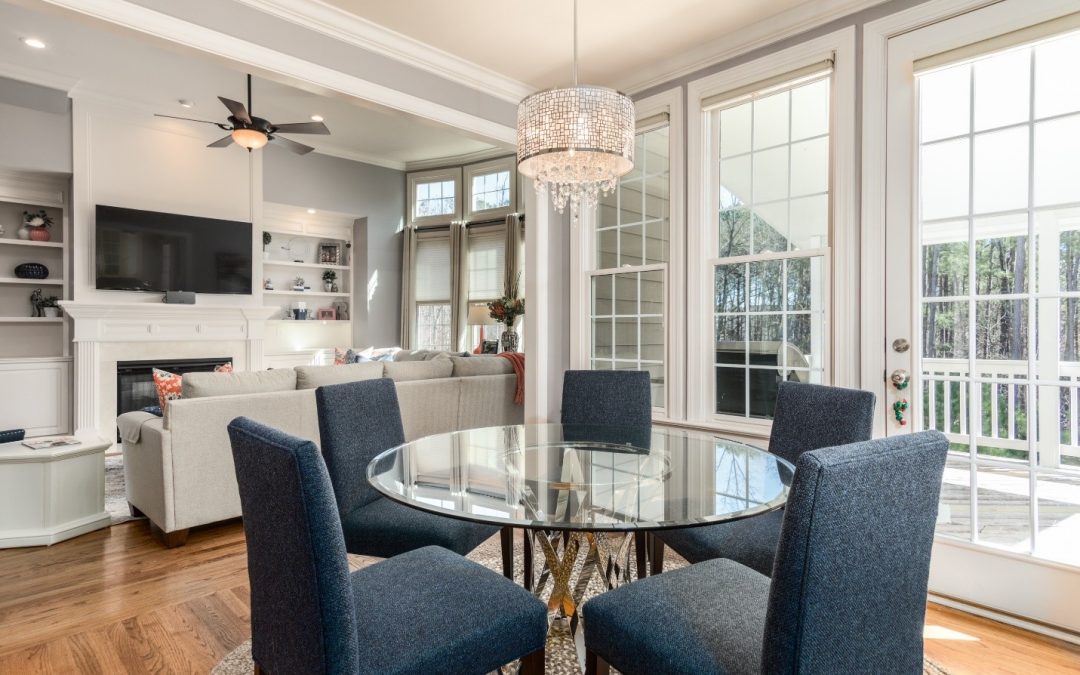First impressions are everything in life. When we meet someone, there are many aspects about their appearance and behavior that will impact how we perceive them for the rest of the time we know them. Shopping for a home is the same way: a good first impression that gets the details right can help a buyer form an instant connection with your home! How do we form this connection between a buyer and the home you’re selling?
The word is “staging”. If you’ve ever visited a furniture showroom, you likely noticed that the sofa, chairs, tables and other furnishings were arranged to make them look more appealing. These layouts of living rooms, lounges, and dining rooms help give you an idea of what the furniture may look like in your own home. Even small items such as a lamp or end table may stand out in these staged layouts and easily catch your eye. These furniture pieces stand out because they replicated the look and feel of a lived-in home. Our mind connects the dots and we don’t see some random furniture in a room- we see what it could be- a real living room!
When it comes to preparing your home for sale, one of your biggest goals should be giving your home its best chance to make a positive first impression. Staging your home will do just that. Studies have shown that staging your home will not only help you sell it faster- but could help you sell if for a better price! Buyers want a glimpse at what life in your home may be like- and staging facilitates that.
While there are professional stagers who do consulting, these services can be pricey. While often worthwhile, not everyone has the budget to hire an industry expert. The reality is that, with a little help from your real estate agent, you can actually do a lot on your own to help stage your home well, even if you’re working with a modest budget.
Here are some simple, affordable staging tips:
- Clean and Declutter- The first step in staging is to start with a clean, clear canvas. Scrub your house down, inside and out, and perform a decluttering of each and every room. Aside from making your home look sharper, this process will mean you have less to move once you’re moving out!
- Focus on Spaciousness- Utilize room layout and lighting to help make each room feel as spacious as possible. The last thing you want is for a room to feel clutter or claustrophobic. If necessary, put some furniture into storage to make room for better staging. Allow for plenty of walking space throughout the house, and try to keep open lines of sight.
- Use decorative items strategically- While you don’t want your surfaces such as shelves and tables to be cluttered, you also don’t want them to be empty! Finding the balance is important. Barb Schwarz, the originator of staging, has suggested using odd-numbered groups of items to help balance and draw the eye. For example, use three pillows on a sofa, rather than two or four.
- Utilize covers and throws- Older pieces of furniture can be totally transformed with a stylish cover or throw that will help the item fit better into a room.
- Embrace Nature- Whenever possible, take full advantage of natural lighting. While you’re at it, consider adding some flowers or a flowering plant to add some color and life into any room.
- Set the Table- Have the table set with your best china. It makes the buyer want to move in and sit down for dinner!
- Update appliances and fixtures- Aside from becoming less efficient items over time, items such as sinks, faucets, and toilets can become very dated and replacing them can help make any room look much better. If these items are too ‘big’ an investment, consider smaller changes like light fixtures or cabinet hardware to a more contemporary style.
Professional stagers look at your home through the eyes of the buyer. Do the same and you’ll be able to see what changes need to be made. With me as your agent, I’m happy to help give suggestions on what might work when it comes to staging your home!


